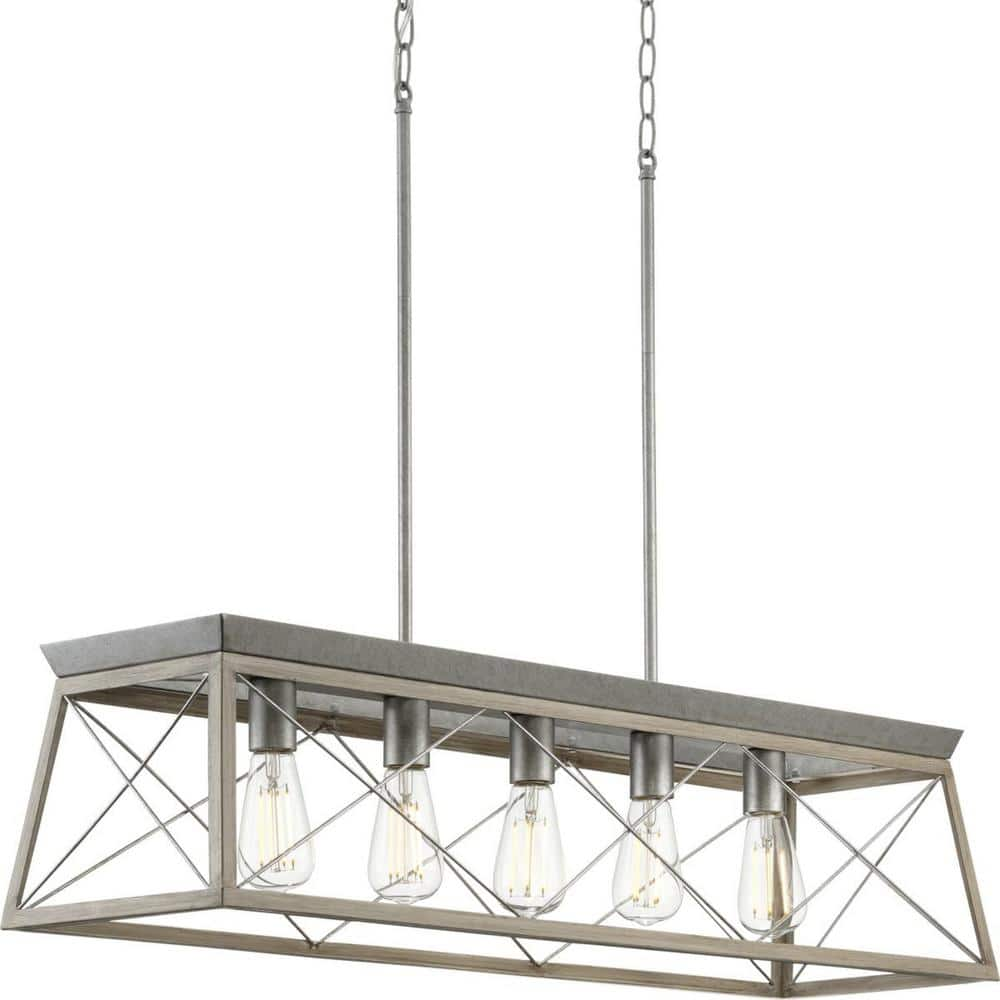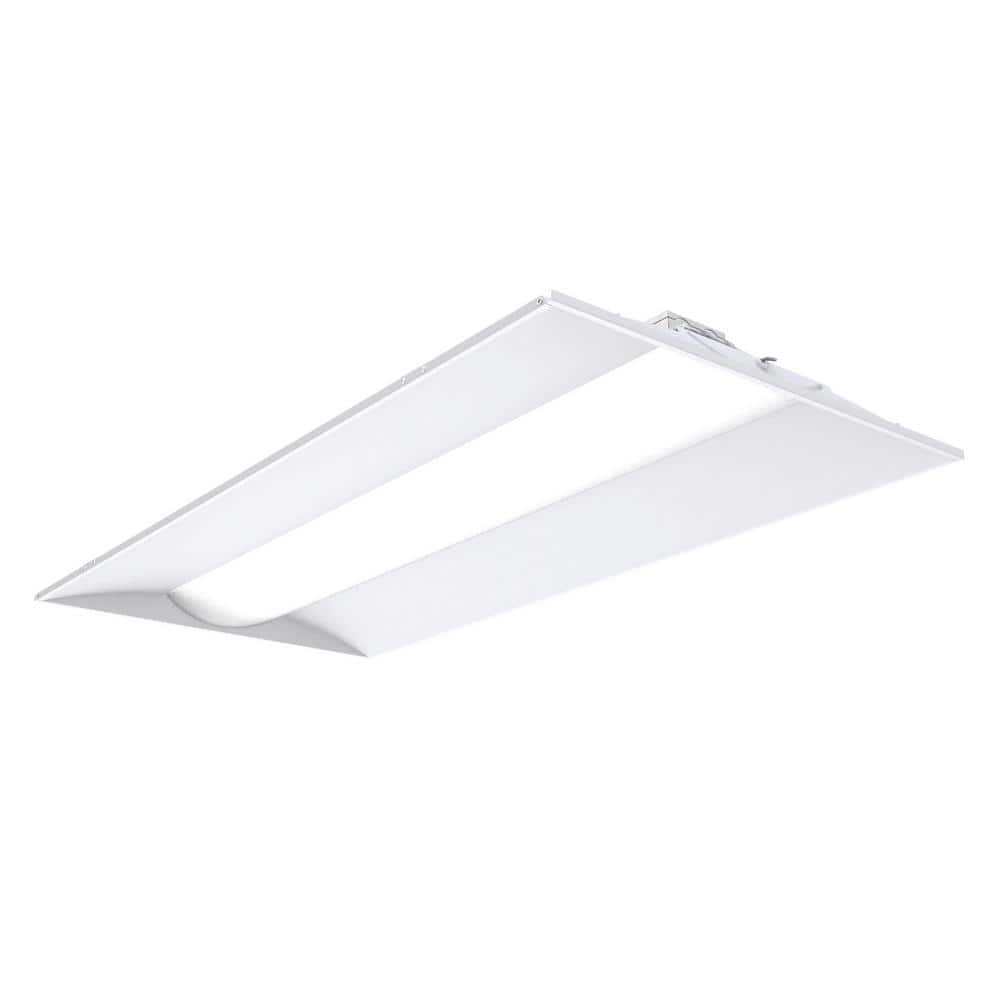Progress Lighting Briarwood Collection 5-Light Bleached Oak Farmhouse Linear Island Chandelier Light
Bleached oak farmhouse linear island chandelier light. Classic X-brace design reminiscent of country barn doors. Compatible with dimmable bulbs.
Create a cozy home with the Briarwood Collection 5-Light Bleached Oak Farmhouse Linear Island Chandelier. Light sources exude a comforting country glow as they peek through the classic X-brace design reminiscent of country barn doors and rustic farmhouse gates. A faux-wood frame coated a rustic bleached oak finish accented by a galvanized plate on top of the structure fuses the chandelier with charming country character. for ideal illumination, use 5 medium base bulbs that are sold separately (100-Watt maximum – LED/CFL/incandescent). The light fixture is compatible with dimmable bulbs. corporate clear light bulbs for a pinch of contemporary shine or opt for vintage bulbs to enhance the light fixture’s rustic demeanor. The linear island chandelier’s rustic design is ideal for any kitchen island or dining room table coastal or farmhouse style settings. It’s time to breathe new life to the mundane every day with timeless and truly transformative bathroom lighting. Make your purchase today to begin your journey to a whole new lighting experience. Progress Lighting products are designed for exceptional quality, reliability and functionality.
- Create a cozy home with the Briarwood collection 5-light bleached oak farmhouse linear island chandelier ideal for any kitchen island or dining room table
- Perfect for coastal or farmhouse style settings
- Faux-wood frame coated a rustic bleached oak finish accented by a galvanized plate on top of the structure fuses the chandelier with charming country character
- Constructed from steel to ensure a long product lifespan
- Light sources exude a comforting country glow as they peek through the classic X-brace design reminiscent of country barn doors and rustic farmhouse gates
- For ideal illumination, use 5 medium base bulbs that are sold separately (100-Watt maximum – LED/CFL/incandescent) compatible with dimmable bulbs
- Measures 38 in. W x 9 in. H x 75 in. L (installed)
- Certifications: cULus dry location listed
- Pairs with Progress Lighting fixtures from the Durrell and Hemsworth collections
- Our 1-year limited warranty guarantees your complete satisfaction with your purchase and includes professional after-sales customer service support, make your purchase today to breathe new life to your lighting design
Additional information
| Chain Length (in.) | 8 |
|---|---|
| Fixture Depth (in.) | 10 |
| Fixture Height (in.) | 9 |
| Fixture Weight (lb.) | 10.85 |
| Fixture Width (in.)38 | 38 |
| Maximum Hanging Length (in.) | 75 |
| Mounting Deck Height (in.) | 0.813 |
| Mounting Deck Width (in.) | 16 |
| Certifications and Listings | UL Certified |
| Manufacturer Warranty | 1-year Limited Warranty |






by Cliff
The light fixtures are beautiful! They made the room look brand new! Excellent quality and stunning decor!
by John
Chandelier matched with 2-light and 1 light from the Briarwood collection – only issues I found is the the base on ceiling did not cover the circular hole needed from the previous light so I needed to do some patchwork. Also, opening of the chain to connect to the base was not the easiest and needed to be careful not to scratch. Otherwise very happy with purchase.
by Floyd
We got this light for our entryway and our mud room and it is the exact size we were looking for. It’s bigger than I thought it would be but we love it!